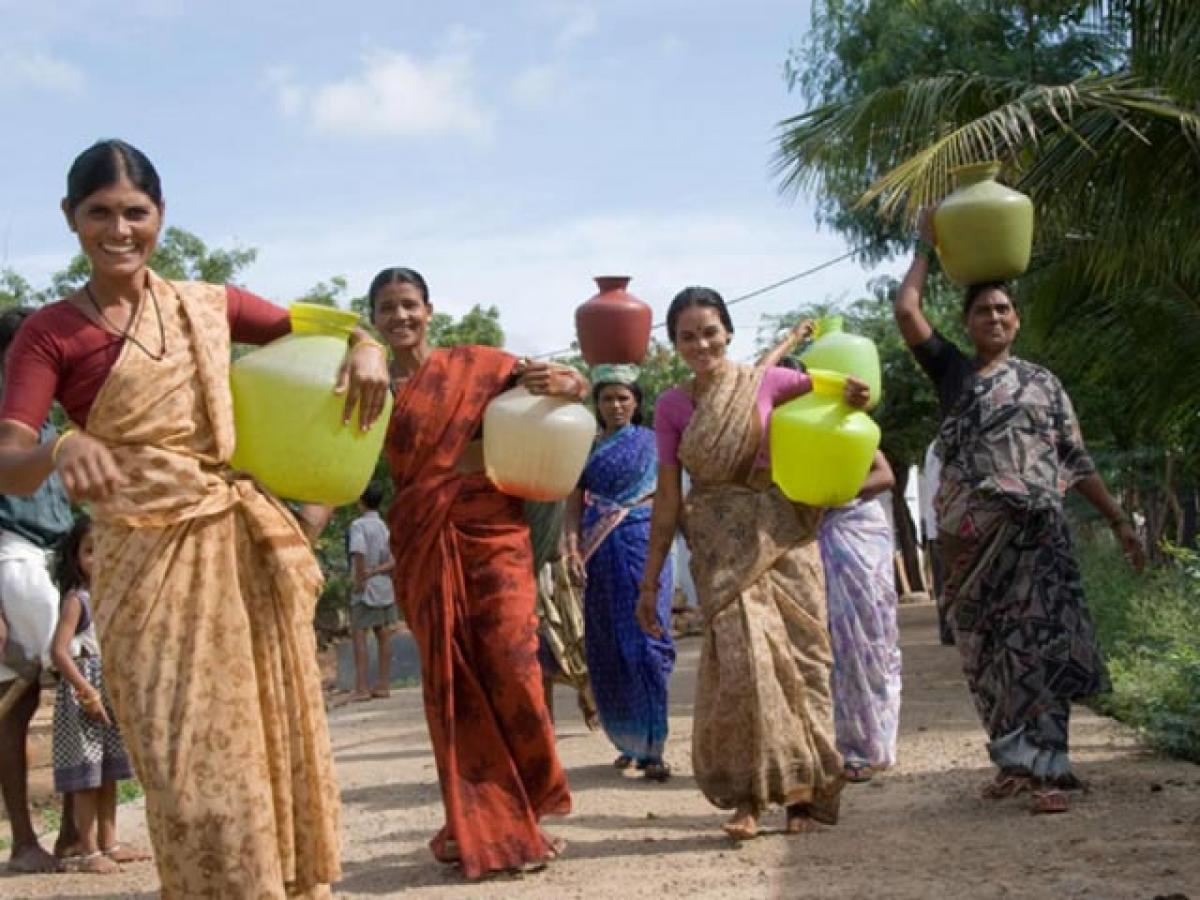Live
- All you need to know about PAN 2.0
- Akasa Air redefines travel experience with industry-first offerings
- MP: Residents stage protests against liquor shop in Indore
- Telugu Actor Shri Tej Booked for Alleged Cheating and False Promise of Marriage in Live-in Relationship
- Toyota Kirloskar Motor Celebrates 1 Lakh Urban Cruiser Hyryder on Indian Road
- MLS: New York City FC part ways with head coach Nick Cushing
- Delhi CM says Centre cutting AAP voters’ names from rolls, BJP hits back
- Hyderabad Metro Rail Phase-II Works to Begin in Old City in January 2025
- Odisha: 668 persons killed in human-elephant conflicts in last three years
- DEFENDER JOURNEYS: TO EMBARK ON ITS THIRD EDITION FROM NOVEMBER 2024
Just In

More than half of Indian households did not have a source of drinking water at home - 63 per cent in rural India - and a fifth of rural households walked more than 500 m to get drinking water, according to 2011 Census data.
More than half of Indian households did not have a source of drinking water at home - 63 per cent in rural India - and a fifth of rural households walked more than 500 m to get drinking water, according to 2011 Census data. In Odisha, Jharkhand and Madhya Pradesh, more than 35 per cent of rural households walk the 1/2-km distance.
One in four rural households spends more than half an hour walking to a water source, according to the Indian Human Development Survey (IHDS II), which surveyed 42,153 Indian households.
Households in rural Odisha take the longest average walking time to reach a water source - more than an hour. In addition, they spend time waiting their turn. Once filled, water jugs can weigh as much as 20 kg.
The situation isn’t any brighter in urban areas: 20 per cent of households spend more than half-an-hour reaching water sources. In the summer, 36 per cent of households across India take 30 min to a water source, up from 23 per cent in other seasons.
As water sources diminish, water becomes more unsafe India is the largest groundwater user in the world with an estimated 230 cu km used every year, more than a quarter of the global consumption.
The limited success of surface irrigation projects and cheap electricity for farmers using tube-wells has led to an over-reliance on groundwater and aquifers. As groundwater levels plunge, millions of Indians are at risk of drinking contaminated water.
A comparison of pre-monsoon groundwater level in the agricultural states of Punjab and Haryana shows that the percentage of wells with water deeper than 20 m has increased 40 per cent in Haryana and 70 per cent in Punjab between 2011 and 2015.
Quality of drinking water is compromised. With safe drinking water hard to access for so many, India loses as many as 73 million working days due to water-borne diseases, according to a 2016 report by the National Water Development Agency.
Bihar, Rajasthan and West Bengal are among the worst offenders, with more than 18 per cent of rural population in these states unable to access quality drinking water, according to a National Sample Survey Organisation (NSSO) report, Key Indicators of Drinking Water, Sanitation, Hygiene and Housing Condition in India.
Socio-economic impact of time spent on walking to fetch drinking water The effort to fetch drinking water slows development, including education, according to global studies by UNDP, Unicef and Oxfam.
Being ‘needed at home’ is a major reason why children, especially girls from poor families, drop out of school. Indian states with a lower human development index (HDI 2007-08) report a higher proportion of rural households without a drinking water source near or within the household and correspondingly longer average walking times for rural women to fetch drinking water.
Close to 92 percent of the IHDS survey respondents reported having enough water through the year, although this figure falls to 80 per cent in the summer. More than 95 per cent of urban respondents across India report having an ‘improved source of drinking water’, such as bottled water, piped water or tubewell water. -By arrangement with IndiaSpend.org
By Saumya Tewari & Rohan Bapat

© 2024 Hyderabad Media House Limited/The Hans India. All rights reserved. Powered by hocalwire.com







